I’m Matthew Beebe.
This is my design consulting practice.
In my work, I draw from the structures and frameworks I have learned and developed to enable diverse teams to tackle ambiguous, complex problems. In my teaching, I draw from these structures and frameworks to provide scaffolding for my students as they chart their own paths. Design possesses untapped potential to address pressing business and societal issues, and I am called to unlock this opportunity.


I began my design journey as a graphic designer, where I developed creative confidence and an iterative approach to exploring and developing ideas. I learned to appreciate the process of creation, not just the final outcome.
Driven by curiosity, I started exploring more strategic aspects of design. I began searching for answers to these questions at the Institute of Design in Chicago, earning my Master's Degree. Equipped with new tools, I joined IDEO as a design researcher and interaction designer. Each project provided an opportunity to delve into new domains and refine my strategic design approach. I often reflected that I never met a project I didn't like!
A new curiosity emerged: I wanted to understand the long tail of design decisions necessary to bring a product to market—all the intricate details, trade-offs, and compromises. I joined the Palm WebOS team to gain experience in shipping a large, complex software product. With sleeves rolled up, I sat shoulder to shoulder with engineers building the software I had designed. I began developing my approach to integrating design into an engineering organization – and I took these lessons to several startups where I worked closely with founders and small teams.
During this phase of my career, I realized the importance of aligning my work with my values and personal interests. While I could muster enthusiasm for any short-term project, I now began to seek a deeper connection, meaning, and purpose in my work.
Currently, alongside my consulting projects, I have a newfound focus on teaching. My classes in interaction design foundations and systems design emphasize hands-on creation, critique, and self-reflection. Drawing from the structures and frameworks I've developed, I provide students with scaffolding to support their first steps before they set off on their own paths.
Early in my career, I witnessed a rising wave of interest in the strategic role designers could play in addressing the most pressing issues of business and society. However, I now believe that wave might be dissipating—the wave is first broken by unsatisfying caricatures of design practice and then by a heavy emphasis on form giving that blurs the boundaries between design and software engineering. Adding to the complexity of this moment, I see the rise of AI tools bringing into question the entire spectrum of design activities and highlighting the still unanswered question: "What is design?"
It is more important than ever that we master the mysterious art of knowing what we should make, and I am here to help.


